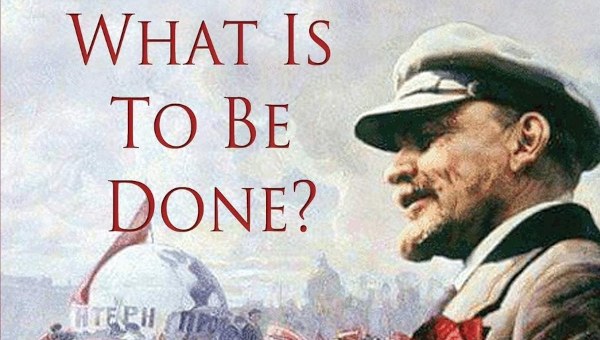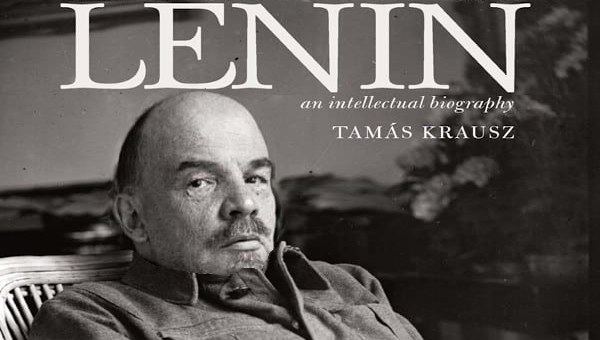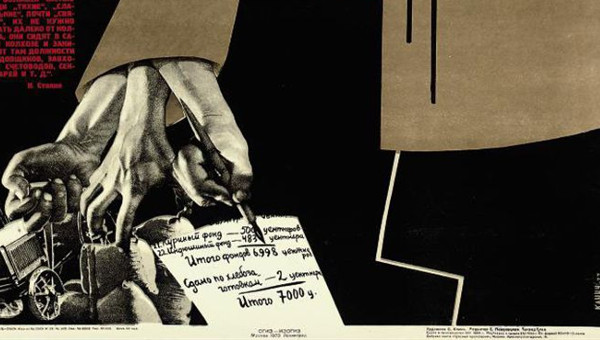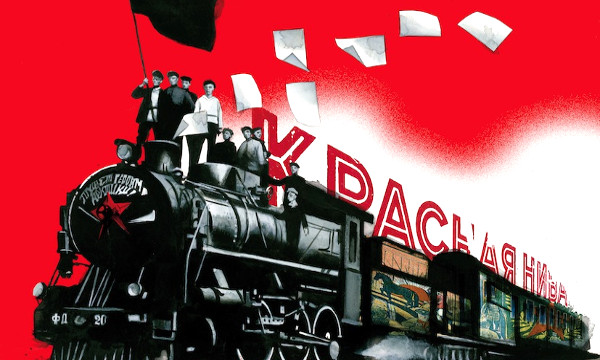#Lenin150: The Man Who Theorized and Practiced Revolution
“You who are building, twenty meters high and on top the trade-union’s
palace, Ilyich’s statue, do not forget in his boot the hole,
testified by many, sign of poverty. Because I hear that it points
Westward, where many of those live who are going to recognize by this
boot Ilyich as one of their own.”—Bertolt Brecht
No one probably influenced world history more than he did: Vladimir Ilyich Ulyanov, or more simply, Lenin. Only Karl Marx, Martin Luther, or Mohammed may dispute Lenin for this title. Lenin dedicated his whole life to revolution, a world revolution. He failed to go global, but the revolution which he led soon stretched across one sixth of the globe and inspired, sometimes ill-fatedly, revolutionary upheavals around the world, which would eventually turn his writings into doctrines in a third of the planet’s nation-states.

Lenin had no idea of his fate. “During the lifetime of great revolutionaries, the oppressing classes constantly hounded them, received their theories with the most savage malice, the most furious hatred and the most unscrupulous campaigns of lies and slander,” he wrote in 1917, the year of the “October Revolution,” which was from the beginning conceived as a global project.
He went on in The State and Revolution to add, “After their death, attempts are made to convert them into harmless icons, to canonize them, so to say, and to hallow their names to a certain extent for the ‘consolation’ of the oppressed classes and with the object of duping the latter, while at the same time robbing the revolutionary theory of its substance, blunting its revolutionary edge and vulgarizing it …”
What Lenin wrote applies to Martin Luther King, Nelson Mandela and, perhaps to Karl Marx and Che Guevara. And maybe it also applies to how state socialism dealt with Lenin and his oeuvre, but it certainly does not apply to how Lenin, the theorist and practitioner of revolution, is being perceived and portrayed today. Lenin’s name today stands for terror or failure in bourgeois historiography and frequently in left-wing historiography as well.
From Stylite to Old Hat
There is no doubt that Lenin was canonized. His followers were found all over the world, especially in the Global South, where his name promised independence from colonial and imperialist exploitation and rapid catch-up development. After all, hadn’t real socialism turned a backward feudalist country into a superpower that rivaled the United States’ empire, and for a time even seemed to win the space race?
Until some decades ago, Lenin’s words – or rather, the specific interpretations of his words taken out of context – were law in the mass communist parties of both East and West. With the collapse of state socialism, Marxism-Leninism as a doctrine also broke down. Among the Marxist-oriented left in the West, not only Marxism-Leninism but also Lenin himself as a thinker disappeared. If one had previously read Lenin’s works as revelation, one no longer read them at all.
Even today in Russia, the mass murderer Stalin is more esteemed than Lenin. After the negative experience with Boris Yeltsin, with his weaknesses and sell-off of public assets, and given today’s pervasive feeling of being besieged by the West, people instead tolerate “strong leaders” (like Vladimir Putin) and hold the victorious “Great Patriotic War” (World War Two) in high regard, while the ruling class fears the native prophet of revolution and subversion.
There are good reasons for speaking against Marxism-Leninism, from its function in securing the Soviet Union under Stalin, to the loss of autonomy of the socialist-revolutionary movements in the West and the resulting vulgarization of Marxism. Indeed, every thinker is fallible, and every thinker historical and unable to control what use is made of their works. Marx’s work itself remained unfinished; he died only having finished one volume of his opus magnum Das Kapital, which once had been laid out as a six-volume plan.
For almost 150 years Marxist theorists, beginning with Friedrich Engels and also Lenin himself, have been trying to fill the gaps – such as the Marxist theory of the state and the world market. Lenin’s theory of imperialism was one of these attempts in the context of a lively discussion involving Karl Kautsky, Rosa Luxemburg, Rudolf Hilferding, Nicolai Bukharin and many others. At the same time, even those who to this day consider Marx’s method and his analysis of the capitalist mode of production “in its ideal average” to be generally correct must always apply it anew to its object, historical-concrete capitalism.
Lenin, who saw himself as a defender of Marx’s work against the revisionism of Eduard Bernstein, which followed from the early 1890s Agrarian Question debate in international social democracy, must also be historicized as a theorist. It was not only Stalin, but also Lenin himself who contributed to the ossification of Karl Marx’s revolutionary thought when he named the “three sources of Marxism” – German philosophy, French socialism and British political economy. But Lenin also contributed to the damage with the sentence, “The doctrine of Marx is omnipotent because it is true,” because it turned the living Marxian method into a doctrine of faith – “comprehensive and harmonious.”
After the historical division of the labour movement, from the political splits of the First World War, the victorious October Revolution of 1917 and the failure of revolution in the West from 1918-1923, the reformist wing of social democracy fought Lenin on principle.
But in the Communist Parties, too, Lenin was turned into an icon and then more or less put on ice with the Eurocommunist turn and its litany of objections: Lenin’s philosophy in Materialism and Empirio-Criticism? Hard to digest and outdated. Lenin’s party theory? Authoritarian and rigid. Lenin’s theory of the state? Idealistic. Lenin’s theory of imperialism? Wrong, because capitalism is not rotting and necessarily collapsing. Indeed, capitalism was proving quite capable of adaptation and reform by absorbing resistance from below, from internal liberal welfare reforms as in the New Deal to “accumulation through dispossession” as in the land grabs and privatizations of neoliberalism.
With its emphasis on monopolization and the export of capital forming an inter-imperialist rivalry (escalating into world war) between the dominant powers, Lenin’s theory of imperialism may have been a telling and powerful description of the Age of Empire – 1875-1914 (Eric Hobsbawm). But it is no longer adequate for today’s global capitalism, in which the internationalization of production and the state has created a transnationalized bourgeoisie which has replaced the rivalry of national bourgeoisies as the dominant form. So, today Kautsky and his thesis of ultra-imperialism and inter-state cooperation between the dominant powers, i.e. the common oppression and exploitation of the Global South by the Global North, holds up better than Lenin for an era of globalization.
Still further, Lenin’s theory of revolution? Not applicable to the West, as the hegemony of the capitalist class is anchored in civil society. Today one cannot simply storm a winter palace – as the Bolsheviks had done in 1917 – to gain power. Antonio Gramsci, as theorist of the failure of revolution in the West and the need to build political and cultural hegemony, has replaced Lenin as the most important political theorist of Marxism.
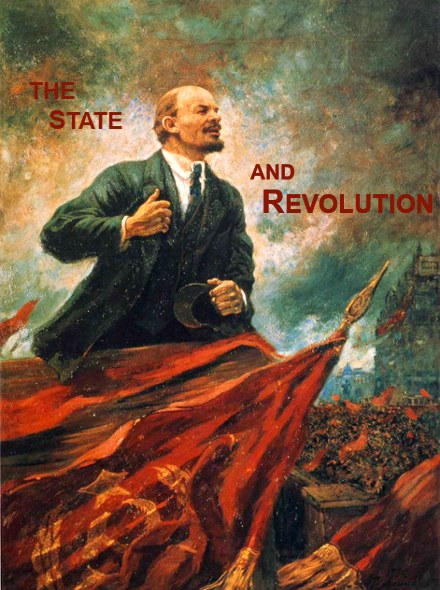 And finally, Lenin’s political legacy? The Soviet Union embodies socialism’s loss of innocence and it represents a failed dictatorship of modernization (or “deformed workers’ state”) with Lenin himself as the precursor of Stalinism, because he dissolved the Duma, prepared the distinction between left- and right-wing deviationists, which proved so murderous during Stalinism, etc.
And finally, Lenin’s political legacy? The Soviet Union embodies socialism’s loss of innocence and it represents a failed dictatorship of modernization (or “deformed workers’ state”) with Lenin himself as the precursor of Stalinism, because he dissolved the Duma, prepared the distinction between left- and right-wing deviationists, which proved so murderous during Stalinism, etc.
Against Lenin, Eurocommunism and post-Cold War Marxism henceforth held high the “Luxemburg-Gramsci line” (Peter Weiss), as standing for a democratic-socialist tradition and a “Western Marxism” untouched by the horrors of Stalinism. Luxemburg’s The Russian Revolution, in which she prophetically anticipated the stagnation tendencies of state socialism, and her integral humanism are often cited as antagonisms to Lenin, the October Revolution and “Eastern Marxism.” Gramsci, for his part, as the theorist of transformation over a series of political breaks, is contrasted with the theorist of revolution of the single moment of rupture, Lenin.
But if one looks more closely, things become complicated. Luxemburg would have wanted the violent revolution that Karl Liebknecht attempted, if it had been winnable. On questions of tactic, she and Liebknecht disagreed in January 1919, and both paid for their revolutionary spirit with their lives. Gramsci, on the other hand, is considered the antipode to Lenin, but was – as Perry Anderson (in “The Antinomies of Antonio Gramsci”) and Domenico Losurdo (in “Antonio Gramsci dal liberalismo al ‘Comunismo critico’”) have pointed out – a fervent admirer of the Eastern revolutionary and Red October. It is, therefore, worth taking a closer look to avoid false contrasts.
What Lenin Still Tells Us Today
It is worth (re-)reading Lenin. Not only are many of the questions he asked still highly topical, but the answers Lenin developed to these questions can still tell us something today. To read Lenin’s works exegetically like scripture is wrong. But not to read Lenin because he was once read this way, however, is a fundamental error of political judgement. So let us take a closer look at a number – organized here under twenty-one points – of Lenin’s central contentions.
First, his assessment that pushing a policy of non-capitalist niches such as cooperatives and rural communes is not – at least not in and of themselves – a way of overcoming capitalism, and that this also does not protect you from major social catastrophes such as war or today’s climate catastrophe. In other words: that you cannot change the world without also taking power. Correct.
Second, the assessment that anarchism and ultra-leftism were and are largely a phenomenon of the “middle classes,” were oftentimes a “bourgeois individualism in reverse” (Anarchism and Socialism) of the old and new petty bourgeoisie, and that they often come as an expression of their social de-classing. Correct.
Third, the assessment that anti-capitalist policies must be carried out by the multi-racial working class, because as an exploited class, and due to the specific class location of its members, these workers have an objective interest in anti-capitalism and socialism, and through means of the strike, the objective capacity for both. Correct.
Fourth, Lenin’s insight that anti-capitalist politics cannot be horizontalist and cannot function as a “movement of movements” (Tom Mertes), and thus what is needed is a parliamentary wing, a political party. After 2011 even demonstrations by hundreds of thousands of people in Southern Europe could not alter policies of austerity, and thus varied new left-wing state-power projects would be on the agenda. Correct.
Fifth, the assessment that anti-capitalist policy in the interest of the working masses cannot be purely trade-unionist (syndicalist) either. In What Is To Be Done? Lenin insists there is also the need of the ‘sword’ of a revolutionary party in addition to the ‘shield’ of the union. “The history of all countries testifies to the fact that the working class may produce only a trade-unionist consciousness exclusively by its own efforts; i.e. the conviction of the necessity of uniting in associations, of waging a struggle against the entrepreneurs, of wrestling from the government this or that law or other law necessary for the workers, etc.” Correct.
Without a party with a theory acting as a ‘generator of meaning’ (Georg Bollenbeck), a socialist position will not spontaneously emerge from the struggles along the axis of capital-labour antagonism. What takes place instead are so-called ‘social partnerships’, ‘company alliances for jobs’ and ‘progressive-competitive’ concessionary policies. Corporatism can flourish during crises and, with a fragmented working class, ‘exclusionary solidarity’ (Klaus Dörre) can also develop between precarious workers and workers with job security. False distinctions can emerge between industrial and service-sector workers, between high-paying ‘male’ industrial sector jobs and low-paying ‘female’ care industry jobs, between private and public sector workers, and between intellectual and manual work.
The task of a socialist party is to work as a political party. But it is also to build a presence inside the trade unions toward a practice of solidarity for the entire working class so that narrowly-defined sectoral, occupation or professional group interests do not prevail. As Leo Panitch points out, without “a class for itself, then you’re going to be left with a working-class that can be picked off industry by industry.”
Sixth, Lenin’s assessment, made as early as 1917 in The State and Revolution, that bourgeois democracy is the “best political shell for capitalism,” because “the omnipotence of ‘wealth’” is “more certain” as it “does not depend on defects in the political machinery…” This is also why, Lenin went on, “no change of persons, institutions or parties in the bourgeois-democratic republic can shake it…” Correct.
Seventh, Lenin’s corollary assessment that the capitalist state is not a neutral instrument that a socialist movement could simply use in the interest of the working classes by winning electoral majorities. Correct. The state under capitalism is indeed a specifically capitalist state.
Eighth, the insistence that ultra-leftism and anarchism on the one side, and electoralist reformism on the other, are mutually dependent. As Lenin put it in ‘Left-Wing’ Communism: an Infantile Disorder, “[a]narchism was not infrequently a kind of penalty for the opportunist sins of the working-class movement.” Correct.
Ninth, the insight from What Is To Be Done? that “the extensive participation of an ‘academic’ stratum in the socialist movement” strengthens revisionism, electoralism and other bourgeois ideologies inside the labour movement. But the bourgeois intelligentsia, which betrayed its own class and turned to socialism (like Marx and Engels themselves), is of great importance because (only it) guarantees the scientific nature of socialist politics. Correct.
Tenth, the pleas from Lenin for the unity of economic struggle, for higher wages, better working conditions, worker-friendly legislation and other everyday improvements, etc.; for political struggle as the ultimate goal of socialism; and for theoretical struggle and debate over the formulation of revolutionary theory in a revolutionary party. All correct. As Lenin maintained in What Is To Be Done?, the “role of vanguard fighter can be fulfilled only by a party that is guided by the most advanced theory.”
Eleventh, in an assessment Lenin constantly returned to, that revolutionary politics is set in the concrete situation and, thus, that the revolutionary must therefore organize themself on the left-wing of the organized workers’ movement. As expressed in ‘Left-Wing’ Communism: An Infantile Disorder, the party cadre has “absolutely to learn how to work legally in the most reactionary of parliaments, in the most reactionary of trade unions, co-operative and insurance societies and similar organizations.” The revolutionary party cannot and must not boycott elections and parliaments. Correct. As Lenin wrote in 1913 in Marxism and Reformism, “Unlike the anarchists, the Marxists recognise struggle for reforms, i.e., for measures that improve the conditions of the working people without destroying the power of the ruling class…”
Twelfth, Lenin’s judgement that by the end of the 19th century the revolution had historically moved from West to East and that in the 20th century it would occur as an alliance of working classes and peasants in underdeveloped capitalist countries, that revolutions take place where the re-distributive resources and the room for maneuvering for the ruling class are smaller than under developed capitalism. Correct. The 20th century was an age not of revolutions in the developed capitalist states, but of revolutions outside the most dynamic centres of capitalism – the Chinese in 1949, the Cuban in 1959, the Chilean in 1970, the Nicaraguan in 1979, and others, all characterized to varying degrees by agrarian-proletarian alliances.
Thirteenth, the calculation that Lenin made that socialists had to exploit all ruptures which emerge among the ruling classes, both domestically and internationally. But the struggle for hegemony means the alliance of the working classes with non-antagonistic classes like the labouring peasants and not a strategic alliance with “progressive” factions of the bourgeoisie. Correct.
Fourteenth, the assessment that the First World War, with its 17 million dead, was the first “predatory imperialist war” in which the working classes of the world had nothing to gain. Which is why, as put in The Tasks of the Proletariat in the Present Revolution, that “not [even] the slightest concession to ‘revolutionary defencism’” was “permissible.” Correct. The policy of truce put forward by the Social Democratic parties hoping to win universal suffrage and social concessions through their waiving of the right to strike in factories and supporting the funding of World War in parliament proved completely misguided. The truce did not initiate evolutionary socialism, but the betrayal of revolution and counter-revolutions which paved the way for European fascism.
Fifteenth, the assessment that the ‘February Revolution’ and the Kerensky government in Russia had no social and political basis, which is why there was an opening for a socialist revolution. Correct.
Sixteenth, the assessment that the councils (‘soviets’) created during the revolution of 1905, with their control over enterprises and land, were the more democratic forum than the liberal elite rule of the representative parliamentarism of the Duma. Correct.
Seventeenth, Lenin’s insight, as expressed in For Bread and Peace, that in 1917 “[t]wo questions” took “precedence over all other political questions — the question of bread and the question of peace.” The setting of revolutionary sails with these two demands and that the ultimate goal of working-class self-management would lead to success. Correct.
Eighteenth, a key contention of Lenin in the April Theses of 1917, on The Tasks of the Proletariat in the Present Revolution, that every successful revolution begins with the attainment of control over the financial sector and the commanding heights of the economy as well as a land reform which expropriates the big landowners and distributes land among the landless peasants. Correct.
Nineteenth, Lenin’s insights, expressed in The State and Revolution, that “the overthrow of the rule of the exploiting class” would not take place as “the peaceful submission of the minority to the majority which has become aware of its aims.” Instead, the domestic bourgeoisie would use all the resources at its disposal to avoid losing the private ownership of the means of production as the source of its social power. Moreover, the ruling classes would receive the support of the foreign bourgeoisies, their states and military apparatuses, as it did during the Paris Commune and now also after 1917. Socialist revolutionaries “do not after all differ with the anarchists on the question of the abolition of the state as the aim,” but must assume that in order to achieve this goal, making “use of the instruments, resources, and methods of state power against the exploiters” may be necessary temporarily, Correct.
Twentieth, the understanding of Lenin (and Trotsky) in the ‘New Economic Policy” that Russia under wartime communism was not yet ripe for the collectivization of agriculture. After the destruction of the civil war, securing food sovereignty would require a resort temporarily (against strong resistance from within the own party) to market-economy elements (such as private property and profit orientation) in this concrete historical situation. Correct.
Twenty-first, Lenin’s assessment that the success of the revolution in underdeveloped Russia would remain dependent on the victory of the revolution in the developed capitalist states in the West. Followed by his realization in 1923 that the revolution in the West had finally failed and – a year later – the warning on his own deathbed against an attempt under Stalin’s leadership of ‘socialism in one country’. Correct.
Lenin but not Leninism
If more than a few radical leftists still share Lenin’s views today, the paradox remains that no one reads Lenin anymore. Yet, from the point of view of his insights are we all – or still – Leninists now?
Here it is necessary to distinguish between Lenin and Leninism as catechism. Lenin himself suggests such a conclusion. For Lenin it was clear, “Concrete political tasks must be set in a concrete situation…. There is no abstract truth. The truth is always concrete” (LW9: 76). What seems correct in one historical moment can be wrong in another. Kautsky’s thesis of ultra-imperialism, for example, published just before the First World War, was dangerously wrong, but it yields more insight to today’s new imperialism of competition and cooperation in the matrix of international state institutions, capital flows and global value chains than that of Lenin, even if the US-China high-tech rivalry, the fissures in the trans-Atlantic empire and the new great recession have indeed led to a resurfacing of some elements of inter-imperial rivalries.
“There are different kinds of compromises,” Lenin warned in ‘Left-Wing’ Communism: An Infantile Disorder. Revolutionary theory always combines the historical-materialist analysis of concrete conditions with situation-based dialectical thinking, that revolutionary theory means a unity of the objective situation and subjective action at the same. Lenin stressed here that the “art and science of waging [the political] struggle” means assessing the historical moment and recognizing the subjectively feasible – the ability to act – in an objective situation. In Two Tactics of Social Democracy in the Democratic Revolution Lenin insisted that for revolution “Concrete political aims must be set in concrete circumstances. All things are relative, all things flow and all things change… There is no such thing as abstract truth. Truth is always concrete.”
Gramsci praised Lenin precisely for the fact that his revolution was a “revolution against Capital” (meaning against Marx’s Das Kapital). In the Russian Revolution of 1905, which followed the Tsar’s defeat in the war against Japan, Lenin gained insight into the general dialectic of war and revolution. The two are connected. After both the First and Second World Wars there was a wave of social and anti-colonial revolutions. An imperialist world war could no longer be prevented. But could the crises of war – as in the ‘Turnip Winter’ in Germany or general war fatigue – be used as an opportunity for a socialist revolution?
Lenin wrongly assumed a rotting capitalism, but he sharply criticized theories of economic collapse and political ‘attentism’ – the wait-and-see attitude of the Second International and its belief in the inevitable collapse of capitalism and an evolutionary path to socialism. Capitalism, Lenin maintained, does not collapse by itself. “Every class struggle,” he said in a text written when he was 25 years old on the death of Frederick Engels, “is a political struggle.” Or, in terms more often invoked today, the working class is politically made, it does not make itself.
Lenin’s definition of a ‘revolutionary situation’ is often quoted as “when those above can no longer do and those below no longer want to.” What Lenin actually wrote in May 1913 is that: “Oppression alone, no matter how great, does not always give rise to a revolutionary situation in a country. In most cases it is not enough for revolution that the lower classes should not want to live in the old way. It is also necessary that the upper classes should be unable to rule and govern in the old way… A political crisis is maturing” (May Day Action by the Revolutionary Proletariat). In this, Antonio Gramsci’s definition of the ‘interregnum’, a historically open situation and period of transition featuring both dangers and opportunities sits proximate to Lenin’s definition of a political crisis (a linkage often obscured in contemporary discussions).
Seven years later, against the background of the victorious revolution, Lenin clarified his considerations: “[F]or a revolution to take place it is not enough for the exploited and oppressed masses to realise the impossibility of living in the old way, and demand changes; for a revolution to take place it is essential that the exploiters should not be able to live and rule in the old way. It is only when the ‘lower classes’ do not want to live in the old way and the ‘upper classes’ cannot carry on in the old way that the revolution can triumph…. [R]evolution is impossible without a nation-wide crisis (affecting both the exploited and the exploiters)…” (‘Left-Wing’ Communism: an Infantile Disorder).
The crisis of legitimacy and representation, a crisis of the political, is however, not sufficient for a revolution. As Lenin elaborates, “It follows that, for a revolution to take place, it is essential, first, that a majority of the workers (or at least a majority of the class-conscious, thinking, and politically active workers) should fully realise that revolution is necessary, and that they should be prepared to die for it; second, that the ruling classes should be going through a governmental crisis, which draws even the most backward masses into politics (symptomatic of any genuine revolution is a rapid, tenfold and even hundredfold increase in the size of the working and oppressed masses — hitherto apathetic — who are capable of waging the political struggle), weakens the government, and makes it possible for the revolutionaries to rapidly overthrow it…”
Lenin – to a certain extent in contrast to Luxemburg – distrusted spontaneous uprisings of the popular masses and sought to combine them with the power of a political organization. Already in 1902 in What Is To Be Done? Lenin had proclaimed, “Give us an organization of revolutionaries, and we will overturn Russia!” As he writes, “The whole art of politics lies in finding and taking as firm a grip as we can of the link that is least likely to be struck from our hands, the one that is most important at the given moment, the one that most of all guarantees its possessor the possession of the whole chain.” In the West, the revolution failed even with organization. Without doubt, the German revolution of 1918-19 failed because of the lack of a revolutionary party. Bourgeois historians, social democrats, and communists alike exaggerated the importance of the Spartacus group. In the general strikes of January and March 1919, the masses wanted to defend their revolution against the counterrevolution formed with the alliance of the social-democratic government since the Ebert-Groener Pact. But they lacked organization. The KPD was only four days old when the general strike began in January, it was bloodily put down and Luxemburg and Liebknecht murdered. Even afterwards, the local soviet republics, uprisings and the Communists and Social Democrats coalition governments at the state-level failed.
Antonio Gramsci argued that in underdeveloped Russia revolution was possible as a war of movement, but in developed capitalism it requires above all a war of position. Today, instead of revolution, we now speak of transforming the state, of the building of non-capitalist state apparatuses around – and on the terrain of – a capitalist state.
Some consider transformation to be reformism and evolutionary politics. So, is Lenin the theorist of revolution and Gramsci the theorist of transformation? Not necessarily, as long as Gramsci’s strategic intervention is not reduced to electoral politics and hegemony at the ballot box, but in its goal in the making of a working class politics and the construction of social counter-power (in all its dimensions) as the precondition to political power.
The issue that has animated socialist party and state theory and practice, from Roberto Michels to Ralph Miliband – “Why do left parties in government almost always never live up to the vision and program they ran on?” remains the crucial strategic question. And how can it be possible – as, say, in the case of the current left government in Berlin with its rent cap measure – that leftwing forces in the government do not de-radicalize but, on the contrary, become more radical and support the radicalization of left political movements in power?
Lenin’s Limits
If Lenin was correct about many things about political power in capitalist societies, and like any political actor he committed errors. But even in asking the right questions Lenin could give the wrong answer or the right answer but for a problem of yesteryear. Completely different and new questions are constantly being posed. In order to understand and overcome capitalism, we can learn many things from Lenin as can many things be learned from Luxemburg, Kautsky, and even Eduard Bernstein, and dogmatic fealty to a thinker should not blind us to this. What are some of Lenin’s errors, contradictions and unresolved questions?
First, Lenin wanted revolution, but under conditions of bourgeois-capitalist development in which the working class was still in the minority. Until the 1950s, in almost all capitalist societies were rural not urban; the majority of the population comprised of a rural peasantry or agrarian proletariat and not an urban industrial working class.
The socialist movement had far too little to offer the producing classes in the country-side. It addressed small farmers only as prospective proletarians and, like Lenin, denied the relatively long-lasting competitiveness of small agricultural property because he saw – not wrongly – in the ‘Agrarian Question’ debate, as posed in Die Neue Zeit by Georg von Vollmar, Rudolf Meyer, Eduard David and later Otto Braun – the vanguard of revisionism a la Bernstein. The political price was high however. Quite a few of the rural poor performed the task of strikebreakers in the industrial cities and later – and much worse – provided bodies to wear the brownshirts of the fascists who took action against their class brothers, overthrowing socialist revolution through far-right counterrevolution. Gramsci called this for Italy the ‘Southern Question’.
In any case, the industrial proletariat never formed the majority even in the developed capitalist West. Lenin himself knew very well what the best conditions were, perhaps not for revolution, but for the construction of socialism. One of the most revolutionary insights of Marx and Engels, according to Lenin, was “The more proletarians there are, the greater is their strength as a revolutionary class, and the nearer and more possible does socialism become” (in Frederick Engels).
In this sense, the conditions for socialism today are potentially better than they were in Lenin’s time. Although the working class is fragmented, the British Labour party’s slogan, ‘For the many, not the few’, speaks to the vast majority now dependent on the sale in a market of their labour-power.
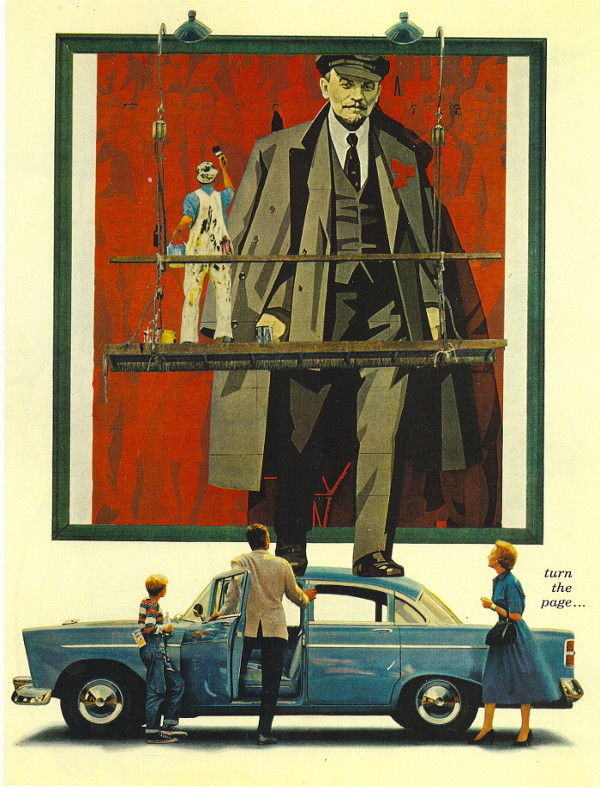
Second, although Lenin had world revolution in mind, in the end he led a revolution in a society (Tsarist Russia) where conditions were among the least favourable for socialist transformation. The “imperialist chain” breaks at its “weakest link”, in the oft-repeated Leninist formulation (which he himself however never published in these specific terms, but which were only attributed to him through Stalin in A Necessary Correction). Here, the emphasis needs to be on ‘weak’ in the literal sense of the word, with less developed social formations forced to build-up the means of production and living standards, under relatively egalitarian conditions , in a hostile and competitive capitalist world market. This leaves these socialist social formations vulnerable to reintegrate into the world capitalist market, in an effort to quicken the pace of development, at the price of growing class and social contradictions (China 1979, Vietnam 1986, Cuba 2012, all quickly come to mind). The hope that political ruptures in peripheral countries – most recently in Bolivia, Venezuela or Greece – would not only inspire socialists in the core capitalist zones, but also trigger socialist transformations, have come to naught. If ‘socialism in one country’ is plainly not viable, political gains remain fraught to maintain and alternate routes anything but clear.
Thirdly, the special character of the Bolsheviks inside the umbrella of the Social Democratic Labour Party in Russia and their orientation toward a centralized cadre and vanguard party was all but forced upon the party as a response to the special oppression of tsarism, the most politically authoritarian state in all of Europe.
Lenin did not want a tightly run party for its own sake. A fervent supporter of the idea of popular democratic councils – soviets – of workers and peasants, the disciplined party model was essentially born of the necessities of authoritarian oppression by the ruling classes. “The Russian proletariat will have to undergo trials immeasurably graver; it will have to fight a monster compared with which an antisocialist law in a constitutional country seems but a dwarf,” in the oft-quoted phrase from What is to Be Done?. Lenin’s thesis that democracy is the best political shell for capitalism did not level the difference, it should be underlined, between republican and dictatorship state forms. In the The State and Revolution), Lenin noted that “A wider, freer and more open form of the class struggle and of class oppression vastly assists the proletariat in its struggle for the abolition of classes in general.”
Lenin’s party principle prevailed in the Western communist counterparts. A disciplined party and the principle of democratic centralism – “freedom to criticize and unity in action” – are undoubtedly beneficial to the ability to act. Today’s left parties like Die Linke in Germany, the Dutch Socialist Party or the Scandinavian left parties. in contrast, generally see themselves as pluralistic left-wing mass parties – coalitions of progressive movements. But in a crisis (whether political, economic or viral) it is difficult for them to act quickly and in a strategically coherent manner. And in non-crisis settings, this very same organizational form facilitates the independence of parliamentary groups, and within these groups an independence of MPs to a degree encouraging clientelist principalities. Even movement-oriented, critical-parliamentarians of the radical left do not want democratic centralism. They tend to see themselves as part of ‘connective parties’ that bundle trade unions, environmental and other social movements into transformation projects. In this way, they guarantee – at least potentially – broad participation.
As I argued at Die Linke’s 2020 Strategy Conference in Kassel, those who adhere to the ‘party in movement’ and reject classic ‘party front’ organizations also must accept the fact that almost all movements that are supposed to replace party organizations are supported by urban – especially the professional and highly skilled – wage earners and often focused on ideological issues instead of ‘universalizable’ material interest-issues. Saying ‘yes’ to pluralistic left-wing parties is also to say accept, for good and ill, spontaneous and unplanned party development that continually reforms political tactics. Today, for instance, this carries the burden that the party can no longer systematically move its cadres from well-functioning and solidified cities to places where party-building is faltering or non-existent.
Participation and radical internal party democracy are essential for the democratic character of socialism. Many unresolved questions still remain:
- How to prevent vanguard parties from taking on a organizational life of its own?
- How are centralized cadre structures compatible with broad popular democracy and how can they deepen the mass political participation and organizational forms that emerge in revolutionary ruptures?
- How is it possible to defend a revolution against the capitalist classes and foreign enemies and their military actions without turning any authoritarian measures into a permanent feature?
- How will the centralization of powers in a revolution not lead – as Luxemburg warned – to the paralysis of public life?
The tragedy of Lenin’s life and the October Revolution was that they ignited incredible hopes and enthusiasm worldwide. But with the crimes during the Stalin era, socialism also lost its innocence. These are the particular perfidies of the real history of capitalism, imperialism, and revolution. Overcoming them today will always have to maintain a dialogue with the work of Lenin, and other of his contemporaries, who devoted their life to thinking and practicing revolution. •
Ingar would like to thank his colleague Michael Brie and his former teacher Greg Albo for helpful comments on an earlier draft of this article.


